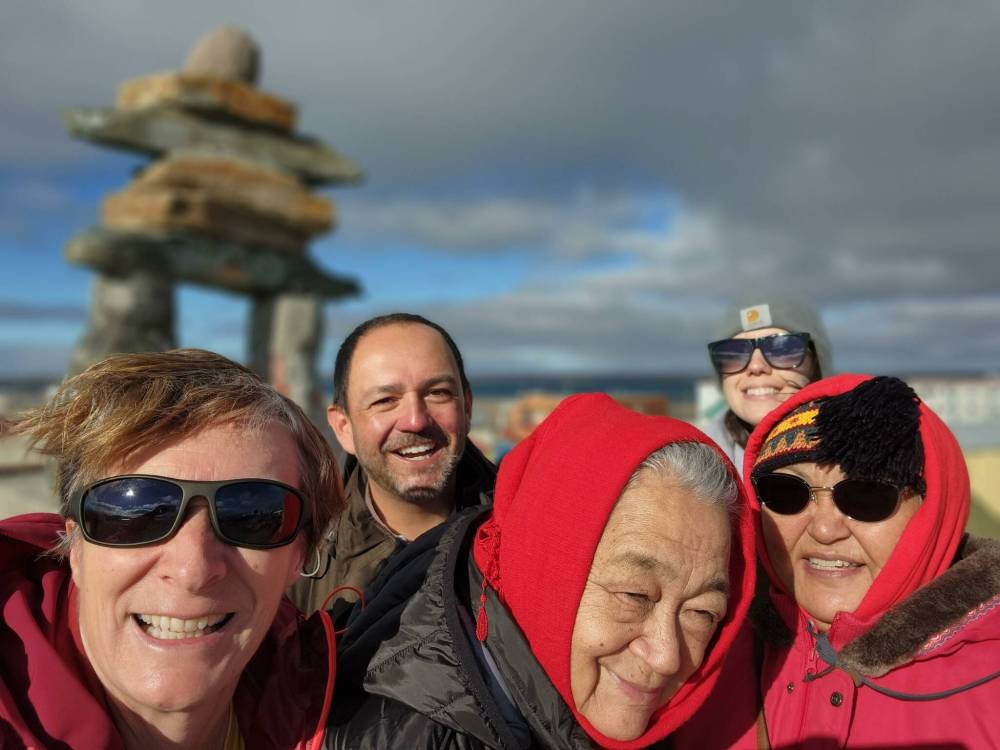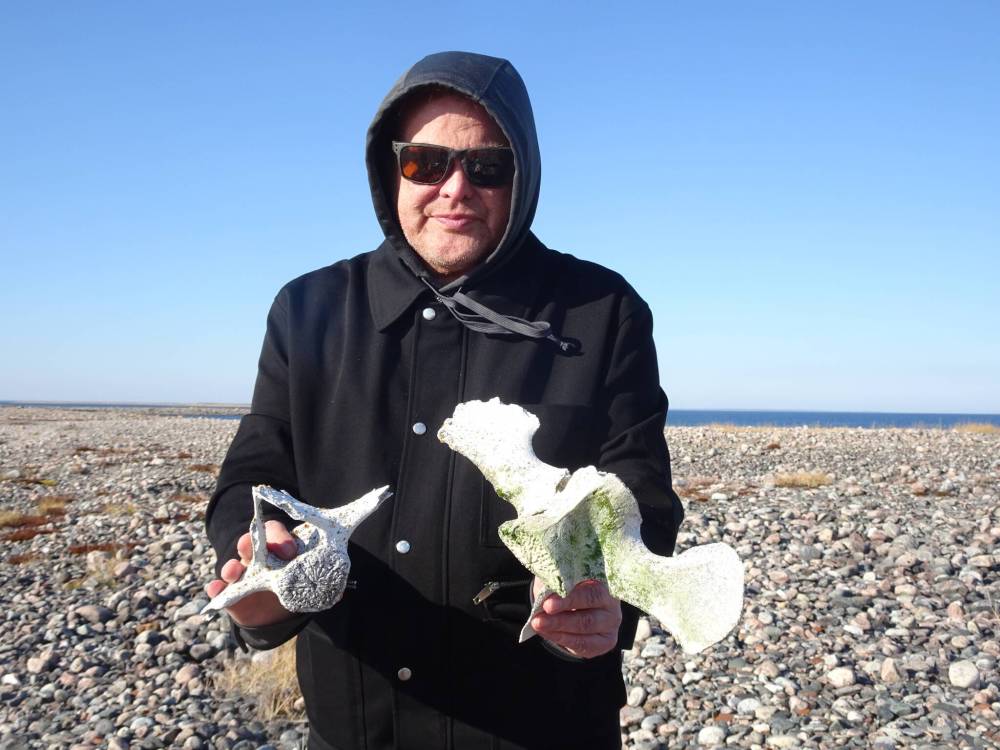Researchers learn about experiences of Inuit youth
Participants to be provided with cameras to take photos, compare their identity in city versus home communities
Advertisement
Read this article for free:
or
Already have an account? Log in here »
To continue reading, please subscribe:
Monthly Digital Subscription
$0 for the first 4 weeks*
- Enjoy unlimited reading on winnipegfreepress.com
- Read the E-Edition, our digital replica newspaper
- Access News Break, our award-winning app
- Play interactive puzzles
*No charge for 4 weeks then price increases to the regular rate of $19.00 plus GST every four weeks. Offer available to new and qualified returning subscribers only. Cancel any time.
Monthly Digital Subscription
$4.75/week*
- Enjoy unlimited reading on winnipegfreepress.com
- Read the E-Edition, our digital replica newspaper
- Access News Break, our award-winning app
- Play interactive puzzles
*Billed as $19 plus GST every four weeks. Cancel any time.
To continue reading, please subscribe:
Add Free Press access to your Brandon Sun subscription for only an additional
$1 for the first 4 weeks*
*Your next subscription payment will increase by $1.00 and you will be charged $16.99 plus GST for four weeks. After four weeks, your payment will increase to $23.99 plus GST every four weeks.
Read unlimited articles for free today:
or
Already have an account? Log in here »
Hey there, time traveller!
This article was published 17/07/2023 (877 days ago), so information in it may no longer be current.
With the click of a shutter, a team of five researchers from the University of Manitoba plan to learn more about the experiences of Inuit youth in the province.
On July 22, 23 and 29, the Inuit Youth Photovoice Project will host several workshops with urban Inuit youth at the Aabijijiwan New Media Lab and Kishaadigeh Collaborative Research Centre at the University of Winnipeg.
Led by health researchers Adriana Mudryj and Josée Lavoie, the team is working alongside the Manitoba Inuit Association to connect with youth and use their experiences to inform research outcomes.

SUPPLIED
The research team — in front of an inuksuk in Rankin Inlet — includes (from left) Josée Lavoie, Nathan Nickel, Elder Nuqalaaq Brown, Adriana Mudryj and Elder Tagaak Evaluardjuk-Palmer.
During the workshops, the participants will be handed cameras to capture photos around Winnipeg to compare their identity in the city versus their home communities.
“With the growing population of Inuit in Manitoba and Winnipeg, specifically, we want to understand how their mental health and mental wellness is supported in an urban setting,” said Carly Zulich, a medical student on the research team.
Zulich said the team originally planned to take a more traditional approach through group interviews and surveys.
However, “We wanted to make it a bit more engaging for youth and kind of allow them to be the lead and them to be the researcher,” Zulich said. “We turned to photovoice.”
Developed in the late 1990s by Caroline Wang and Mary Ann Burris, photovoice is a community-based, qualitative research method that uses photos taken by participants to inform political and social change.
There were 70,545 Inuit living in Canada in 2021, with just under two-thirds living in Inuit Nunangat — the homeland that includes Inuvialuit Settlement Region, Nunavut, Nunavik and Nunatsiavut.
Over the past several years, the Inuit population in Manitoba has grown.
There were 1,140 self-identified Inuit living in Manitoba according to the 2021 Census, with 695 living in Winnipeg. In the 2016 Census, there were 955 Inuit in Manitoba; 465 in Winnipeg.
Lavoie believes the 2021 numbers are an underestimation. Her work on the Qanuinngitsiarutiksait study (2015-21), which used administrative health data to determine population, estimates there are more than 1,500 Inuit living in Winnipeg alone.
(Additionally, Inuit from the Kivalliq region of Nunavut travel to Manitoba to access health services, at a rate of 16,000 consults per year.)
Lavoie, who directs the Ongomiizwin Indigenous Institute of Health and Healing, said the project’s roots go back to 2014. That year, she was approached by Inuk scholar Wayne Clark to study Inuit interactions with the Manitoba health-care system.
“There were very (few) services that were adapted for Inuit in Manitoba, at the time.”
In 2015, they assembled a group of elders to create a task force to determine why Inuit travel to Manitoba and what services they seek.
“One of the pieces that become very apparent is that mental health is one of the main reasons,” Lavoie said.

SUPPLIED
The project’s roots go back to 2014 when Inuk scholar Wayne Clark, here at Sentry Island (Arvia’juaq), approached Josée Lavoie.
Suicide rates among Inuit are estimated to be nine times higher than for non-Indigenous Canadians, according to a Statistics Canada report in 2019.
The suicide rate among Inuit males ages 15-29 is 40 times as high as the general Canadian rate in some regions, according to data analysis conducted by non-profit Inuit Tapiriit Kanatami.
Accordingly, mental health struggles translate into how Inuit access services in Manitoba. The Qanuinngitsiarutiksait study found Inuit living in Manitoba are primarily hospitalized for mental health reasons.
Zulich, who first met Lavoie while completing her master’s degree in health policy at the University of Toronto, said many of the challenges Inuit youth face are a result of the ongoing legacy of colonialism.
“Through colonialism, there were so many familial structures and community structures that were destroyed,” Zulich said. “It really took Inuit away from their culture and their family.”
Using photography as a medium, the researchers hope representations of these struggles will come to the fore, allowing them to work towards making Manitoba a more welcoming and supportive place for Inuit youth.
“We hope that through their photovoice, we’re going to learn more about the places that they go to find themselves, to find peers, to find cultural safety, to find cultural knowledge,” Lavoie said.
After the project closes, the findings will be passed on to partners in the mental health system to adapt programming to better serve Inuit youth.
“As a researcher, it’s very rare that I see my work have a tangible impact today or tomorrow,” Lavoie said. “This has been one of those projects because of the strength of the partnerships (and) because of the leadership of the elders. We do work, and the day after, we know it’s having a positive impact.”
Photos will later be featured at the Winnipeg Art Gallery-Qaumajuq, complementing its vast collection of Inuit art.
cierra.bettens@freepress.mb.ca


